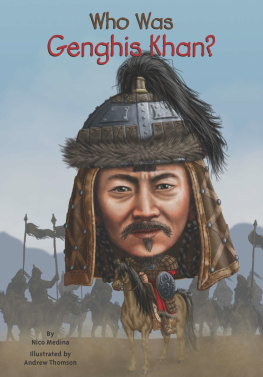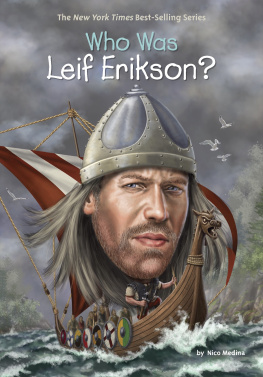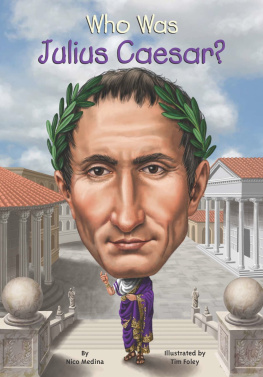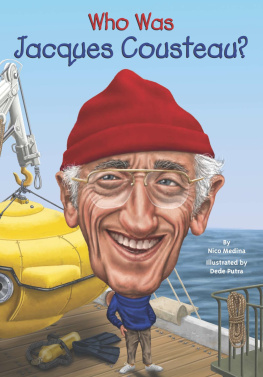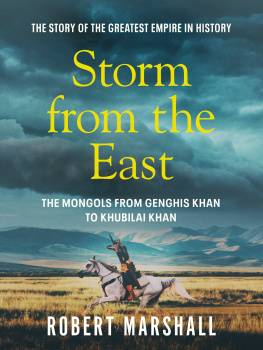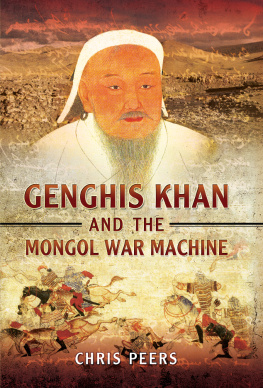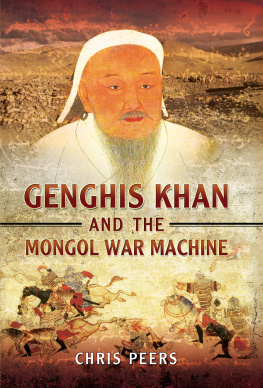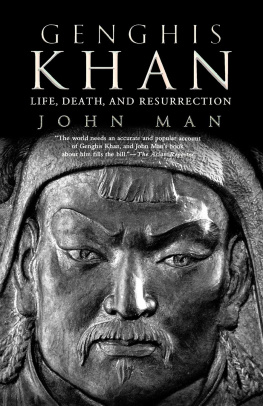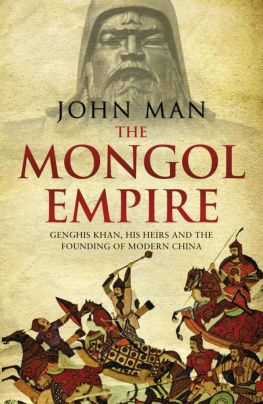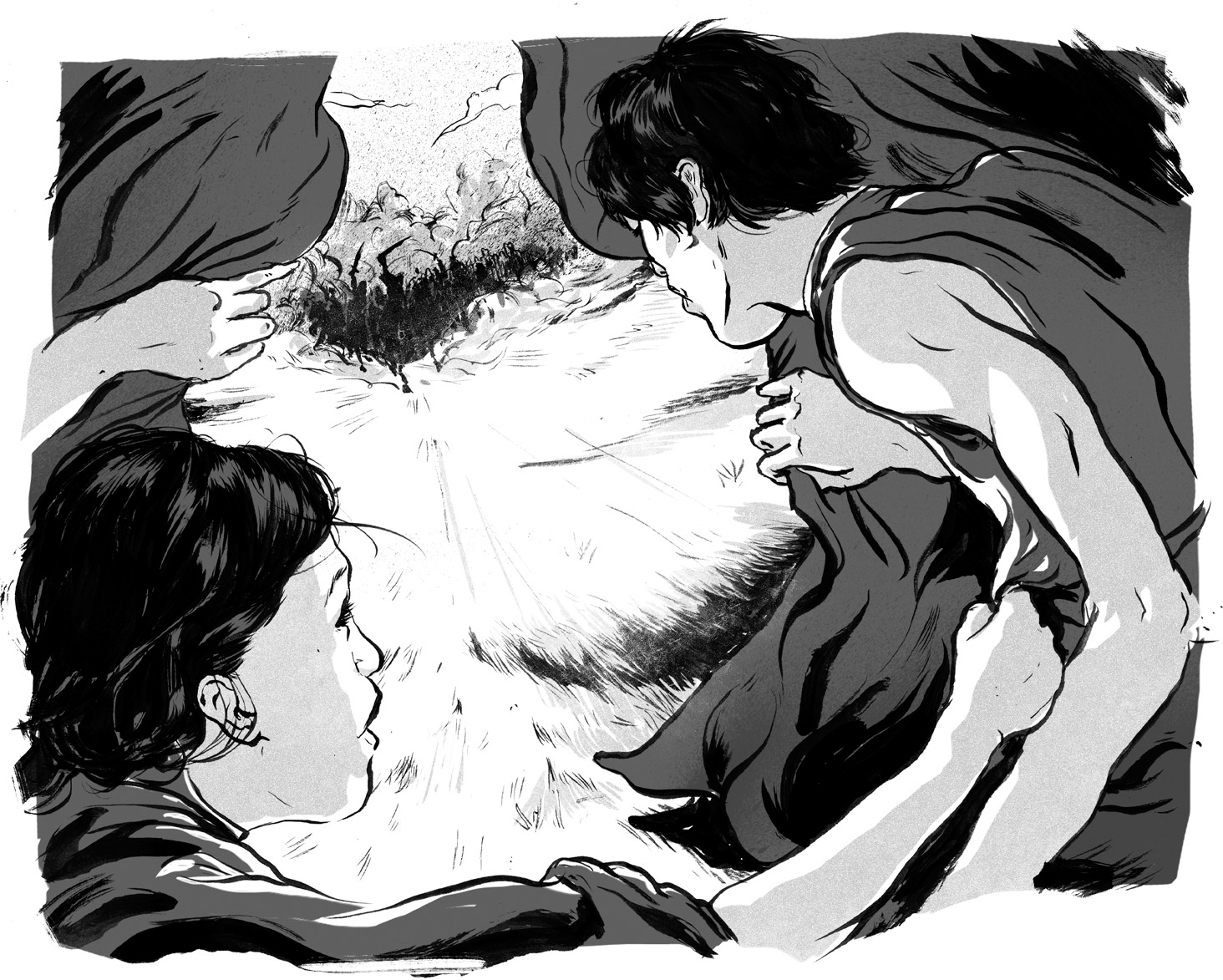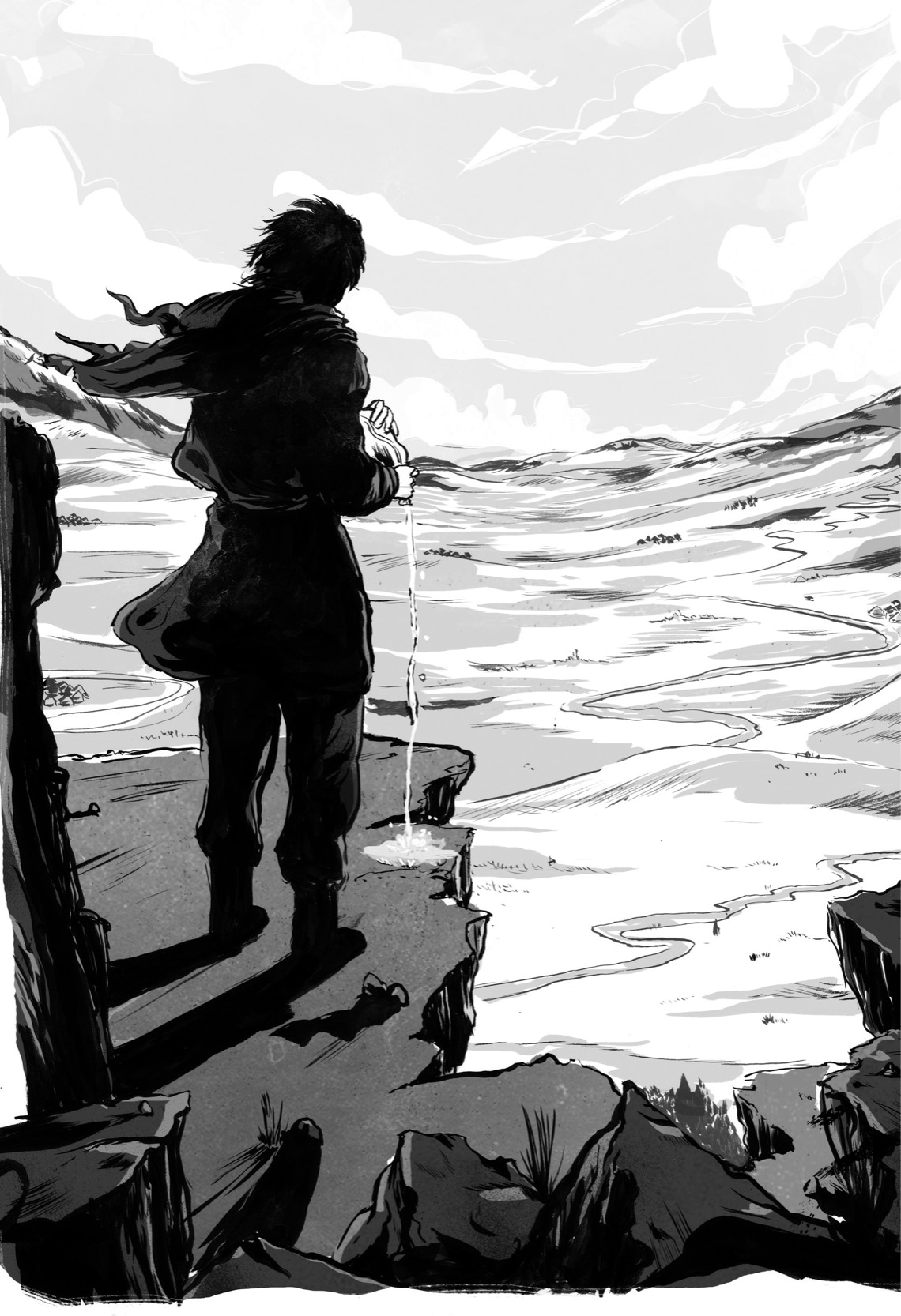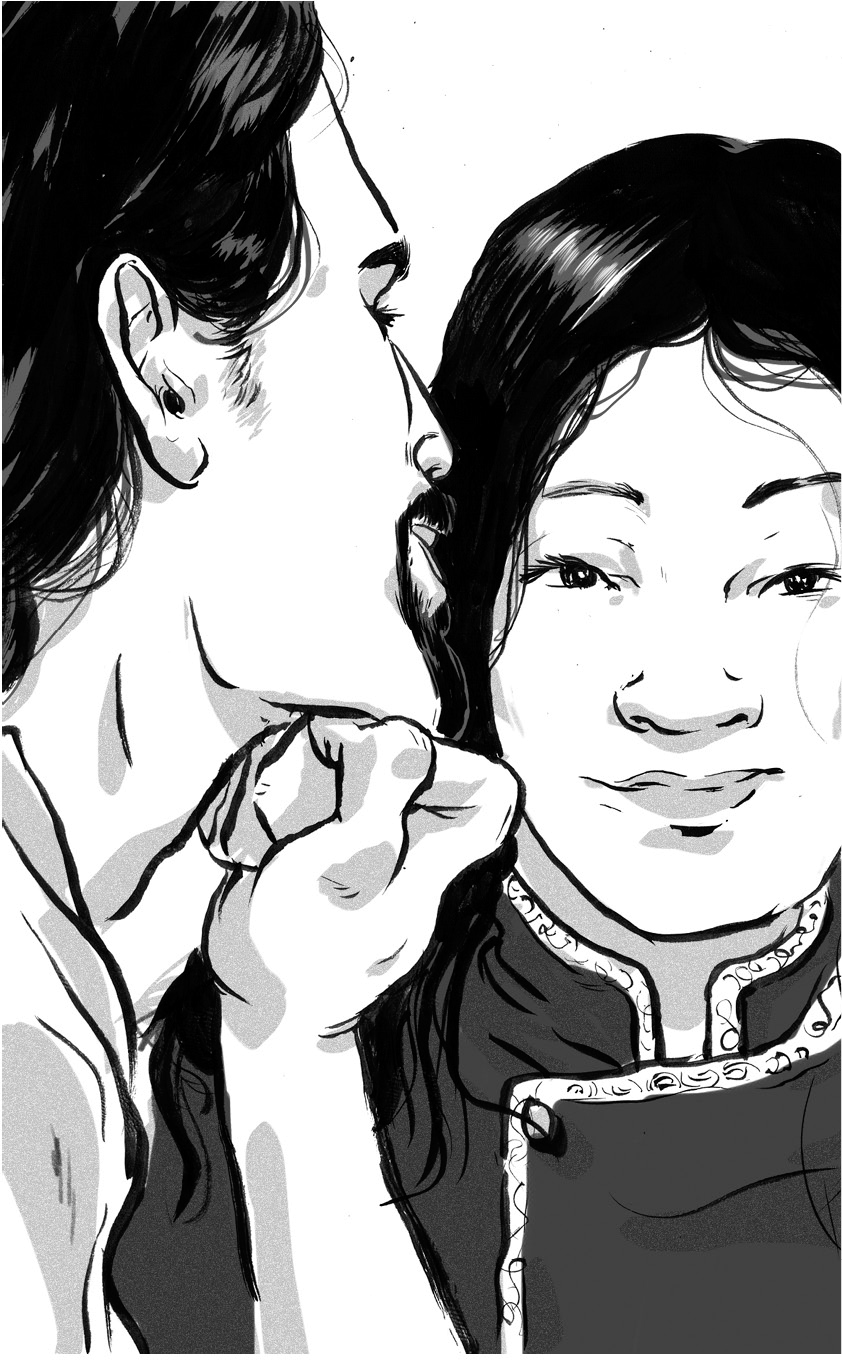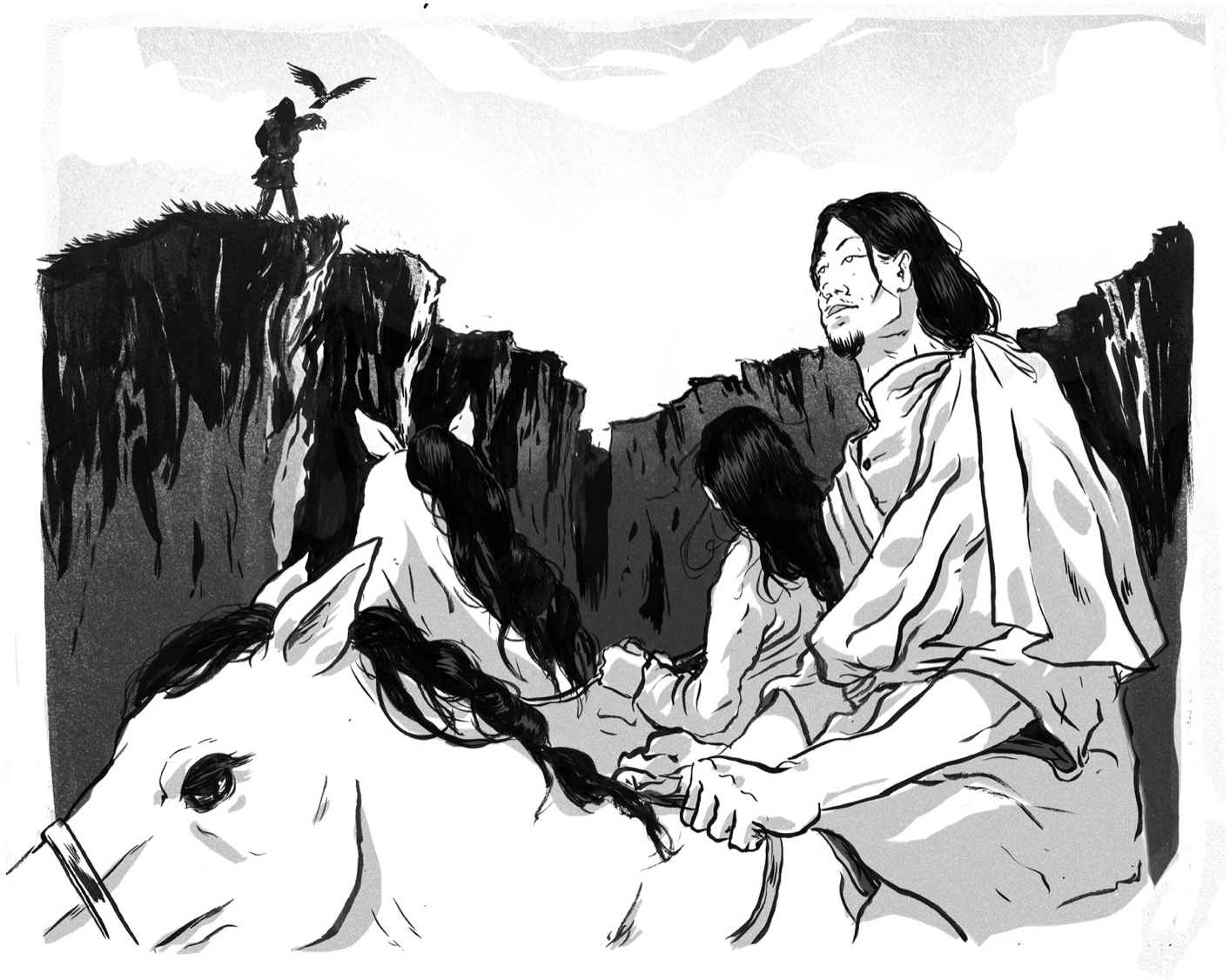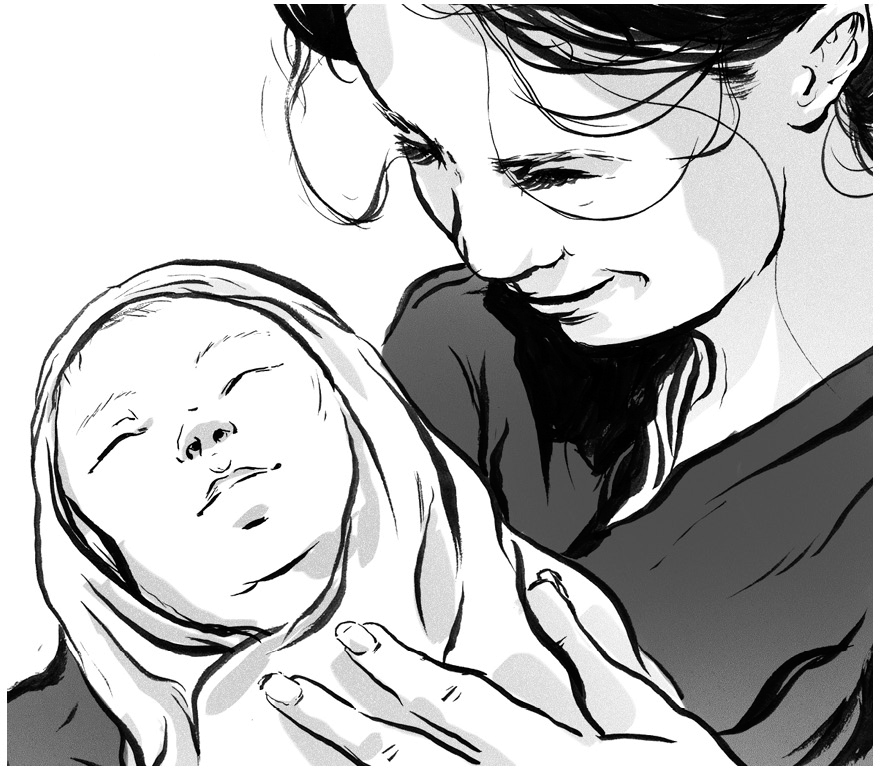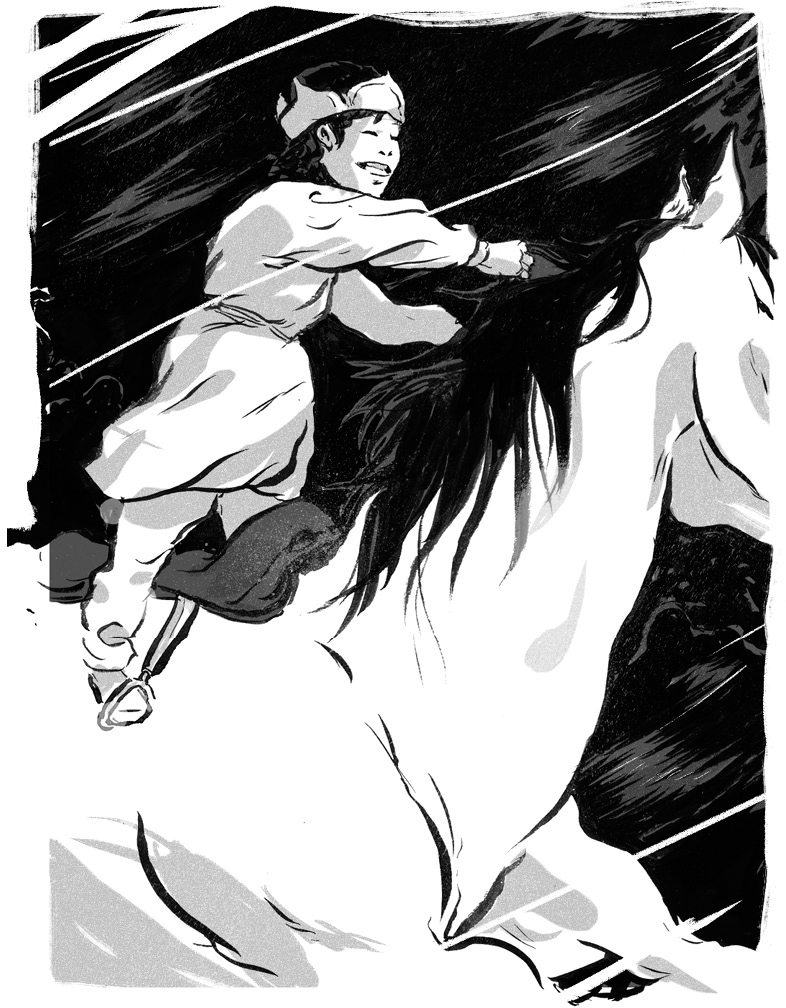Who Was
Genghis Khan?
By Nico Medina
Illustrated by Andrew Thomson
Grosset & Dunlap
An Imprint of Penguin Group (USA) LLC
To Jessica and Katherine,
for the Excellent AdventuresNM
To Rhia, Mum & Dad, and DaiAT
GROSSET & DUNLAP
Published by the Penguin Group
Penguin Group (USA) LLC, 375 Hudson Street, New York, New York 10014, USA

USA | Canada | UK | Ireland | Australia | New Zealand | India | South Africa | China
penguin.com
A Penguin Random House Company
Penguin supports copyright. Copyright fuels creativity, encourages diverse voices, promotes free speech, and creates a vibrant culture. Thank you for buying an authorized edition of this book and for complying with copyright laws by not reproducing, scanning, or distributing any part of it in any form without permission. You are supporting writers and allowing Penguin to continue to publish books for every reader.
Text copyright 2014 by Nico Medina. Illustrations copyright 2014 by Penguin Group (USA) LLC. Cover illustration copyright 2014 by Nancy Harrison. All rights reserved. Published by Grosset & Dunlap, a division of Penguin Young Readers Group, 345 Hudson Street, New York, New York 10014. GROSSET & DUNLAP is a trademark of Penguin Group (USA) LLC.
Library of Congress Cataloging-in-Publication Data is available.
ISBN ISBN 978-0-698-18740-5
Version_1
Who Was
Genghis Khan?
The year was 1179. A teenager named Temujin slept soundly in his felt-walled tent alongside his wife, Borte.
The round tent, called a ger, stood alone at the edge of the steppea region of vast, flat grasslands in Mongolia. Temujin and Borte shared this ger with family and friends. Together, they formed a small clan of thirteen people.
Most clans lived close together, forming communities of thousands called tribes. But Temujins clan lived alone and isolated.
An old woman was awakened by vibrations in the ground.
Hoofbeats. Coming closer.
She screamed for everyone to wake up. Someone was coming!
Three hundred men on horseback from the Merkid tribe raced toward Temujins ger. Eighteen years earlier, Temujins fathera man named Yesugeihad kidnapped his mother from her Merkid husband. Now Temujin was grown, with a wife of his own. The Merkid wanted revenge.
Temujins clan jumped into action. But there were not enough horses for everyone to escape. In the confusion, Borte was kidnapped.
Temujin and his clan rode hard through the night. They tried to reach the safety of the forested mountains to the north. There was nowhere to hide on the treeless steppe.
For days, the Merkid searched for Temujin. Finally, they gave up and returned home with Borte as their prisoner.
Temujin climbed to the top of Burkhan KhaldunGod mountain in Mongolian. The Mongols worshipped the spirits of the earth, sun, and sky. Burkhan Khaldun, the tallest peak in the area, was the closest earthly place to the Eternal Blue Sky.
To thank the gods for protecting him, Temujin flicked milk into the air then sprinkled some on the ground. He prayed for guidance for three days.
Three rivers flowed from this sacred mountain, presenting Temujin with three choices. He could follow one river southeast, back toward his ger. But alone on the steppe, he would never be safe from future attacks. The Onon River flowed northeast, back to the forests where Temujin had grown up, barely surviving by hunting birds and mice. He did not wish to live like that again.
So Temujin chose the third river. He followed it southwest, to the Kereyid people.
The Kereyid joined forces with Temujin and his clan. They attacked the Merkid and rescued Borte.
But that was only the beginning.
Over the next twenty-seven years, Temujin would unite all the steppe tribes. He would become Genghis Khan, ruler of the Mongols, and conqueror of the largest land empire the world had ever known.
Chapter 1
Life on the Steppe
Temujins mother, Hoelun, came from the eastern steppe. At sixteen, she married a Merkid tribesman named Chiledu. The man traveled a long way to seek her hand in marriage.
On their way back to Chiledus homeland, someone was watching. Yesugei was hunting with his falcon when he spotted the couple from atop a cliff. He thought Hoelun was beautiful. Yesugei already had a wife, but he decided he wanted another. He rode back to camp, returned with his brothers, and chased after the newlyweds.
Hoelun knew they could not outrun the men. She told Chiledu to run. If he was captured, she said, he would be killed. So Chiledu fled, and Yesugei took Hoelun to his clan.
This was life on the steppe: brutal, unforgiving, dramatic. It had been this way for centuries.
Hoeluns new life with Yesugei was different from her childhood. She grew up on the open grassland. Her people raised cows, goats, sheep, and horses for meat and milk. But Yesugei lived where the grassland met the wooded mountains. They had little livestock, and hunted in the forest for food: rodents, birds, fishwhatever they could get.
In the spring of 1162, about a year after being kidnapped, Hoelun gave birth.
Temujin, the boy who would one day be called Genghis Khan, was born on a hill overlooking the Onon River, near the modern-day border of Mongolia and Siberia.
Yesugei had just returned from fighting the Tatar tribe in the east. He named his son after a warrior he had killed: Temujin.
Temujin grew up playing along the Onon River with his younger brothers and sister. He also had two half brothersBegter and Belgutei.
Like all children on the steppe, Temujin grew up hunting and riding horses. By four, he could ride aloneand soon after, while standing up! Once his legs were long enough to reach the stirrups, he shot arrows and threw lassos while riding.
When Temujin was eight or nine, his father decided to find him a wife. Together they journeyed east. Yesugei met with a man who had a daughter named Borte. She was a year older than Temujin. The fathers decided their children should marry. Temujin was to stay and work for Bortes father until it was time to marry her.
On his way back home, Yesugei saw a group of feasting Tatars. Tired and hungry, he stopped to join the party. Eight years had passed since Yesugei killed the Tatar warrior who was also named Temujin. But he was recognized, and his food was poisoned. As Yesugei rode home after the feast, he fell ill.
He sent a messenger to his son. He was dying. Temujin needed to come home.

